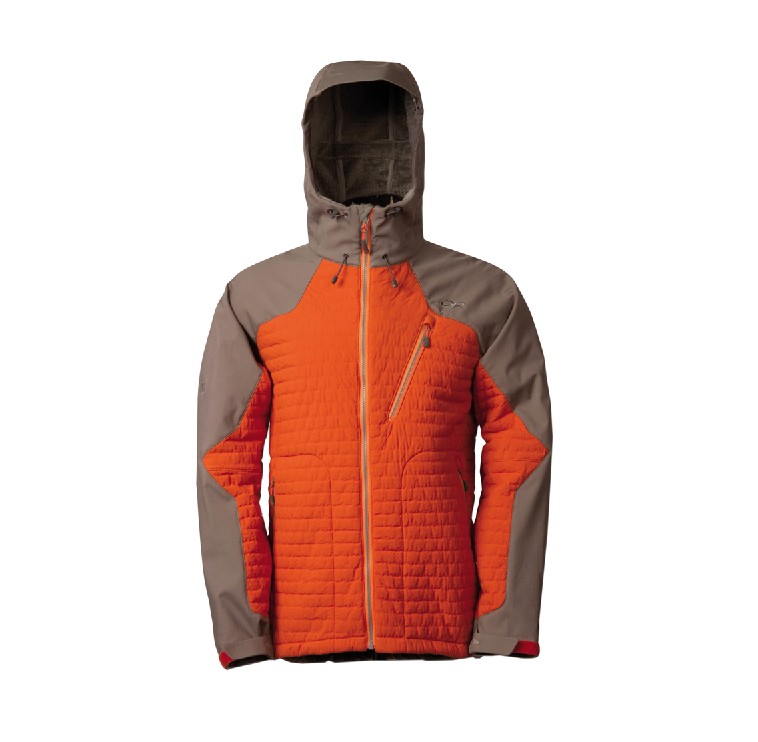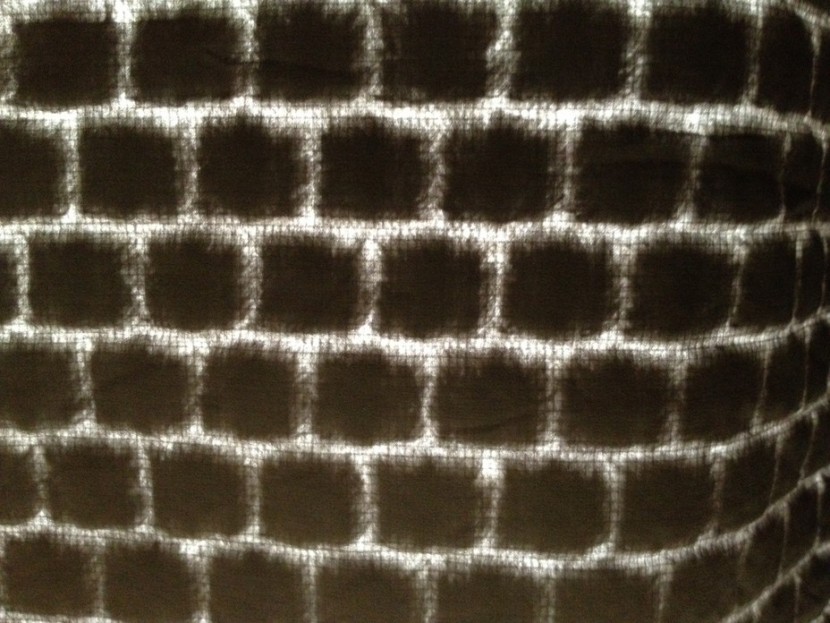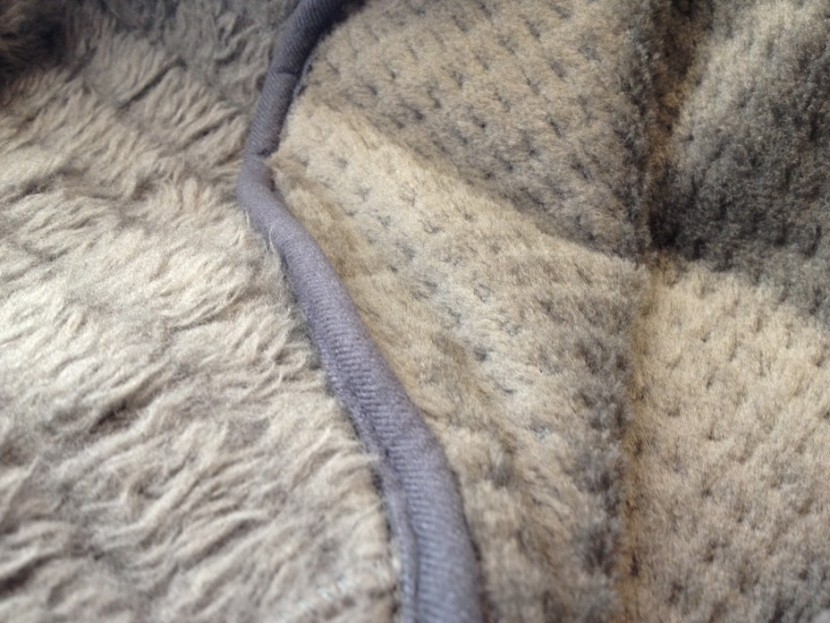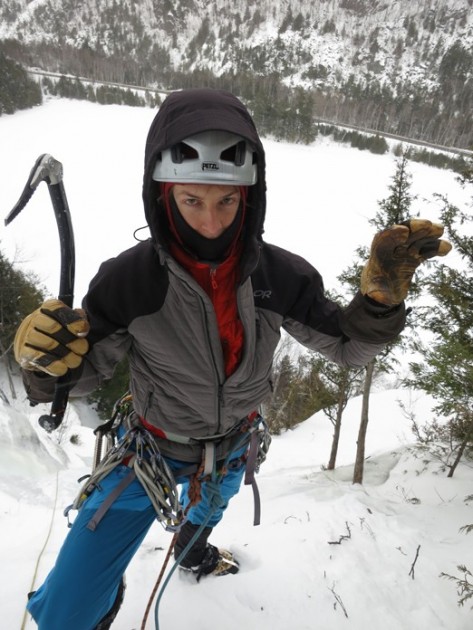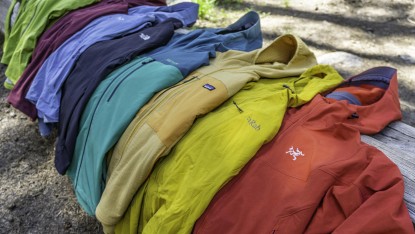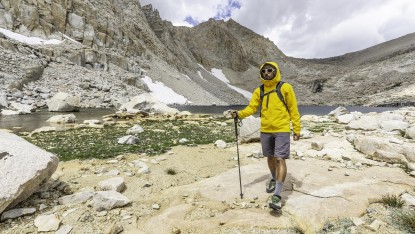Outdoor Research Lodestar Jacket Review
Our Verdict
Our Analysis and Test Results
Wind and Water Resistance
The highly wind and water resistant Polartec Powershield Pro covers the shoulders, outside of the arms, and hood. This helps the jacket fight wind and dripping water. The material is also highly durable and battles wkward chimney grovel session and general abuse like a champion. Polartec Powershield Pro is a marvelous material for softshells. The Lodestar is not waterproof and is best for cold climbing days where precipitation comes in snow.
Breathability
The Lodestar uses a much thinner and more breathable face fabric for the chest, back, and inside of the arms. This helps to dump heat and moisture vapor when you're working hard. The photo below shows how the large grid fleece leaves spaces that increase breathability.
Warmth
Two weights of Polartec High Loft fleece provide strategic insulation: ultra warm and shaggy looking patches keep your torso toasty while a less lofty version insulates the arms and hood. This is the warmest softshell we've ever tested and we love how it minimizes the need for layering. On cold days where we were always moving we were able to wear the jacket with only an expedition weight baselayer. For stop and go activities we preferred to add more insulation, like a Patagonia R2 Jacket. If your partner climbs quickly we found that it's possible to climb without a belay jacket on shorter multi-pitch ice routes— by the time you cool off your partner will arrive and you can keep charging. This is not possible with many uninsulated softshells.
Mobility
The Lodestar comes up short in our mobility rating. We tested this jacket side by side with other top softshells, swapping jackets half way through each day, and all of the our testers found that the Lodestar was less mobile, i.e. more restrictive, than its closest competitors. The problem lies primarily with the cut of the arms: lifting your arms overhead, like us climbers tend to do, pulls the waist hem up considerably higher than many other softshells. Further, the elbows are noticeably less ergonomic than the Arc'teryx Venta MX and Venta SV. Compared to its closest competitor, the Patagonia Northwall, the Lodestar is considerably less mobile. This is a significant and unfortunate drawback that led our testers to prefer other softshells for climbing.
Features
The Lodestar is a highly technical alpine climbing softshell with a pocket design that's typically found on casual urban jackets. The two handwarmer pockets are obscured by a backpack's waist belt and by a harness, and are relatively small as handwarmer pockets go. The chest pocket—most climbing shells have two!!— is tiny compared to other climbing specific shells. The pocket design severely limits the Lodestar functionality for climbing. Several of our testers like to climb with thin, dexterous lead gloves and belay with warmer gloves, but the Lodestar's pocket design makes it hard to do this. This author believes the jacket should skip the handwarmer pockets entirely and have two very larger crossover chest pockets. The Arc'teryx Venta MX and Alpha SV do this and perform considerably better as a result. Furthermore, the hood would be more comfortable to climb in if it were larger.
Style
The Lodestar is very attractive. The two colors and robotic looking patterning make your shoulders look broad, strong, and manly. All of our testers agree that this is one of the most attractive softshells out there.
Weight and Packed Size
Weighing 28.2 oz. on our scale the Lodestar is a jacket that you don't want to put in your backpack. The weight isn't a problem when you're wearing it, but carrying it is less than ideal. Therefore, it's best to never take the Lodestar off. Consequently, one must be confident that the temperatures will be sufficiently cold for the duration of a climb.
Limitations To Insulated Softshells
Although insulted softshells are good for active use in cold weather, they are a weight-inefficient way to keep you warm. Softshells also have reduced weather resistance and versatility when compared to an equivalent weight combination of two other types of jackets: a hardshell layered over a fleece, for example.
More specifically, the Patagonia R2 fleece and the Mountain Hardwear Blazar hardshell combination weigh a total of 19 ounces (nearly 10 ounces less than the Lodestar) and are warmer, completely waterproof, shockingly breathable, and much more versatile because they can be used alone or with other layers in any season. Although the Lodestar works OK at other things, like walking aroud town, we only recommend it for climbing. To be explicit, softshells are not suitable for backpacking and are rarely ideal for multi-day trips. Advances in waterproof breathable fabrics are quickly narrowing the comfort gap between softshells and hardshells. Many new top-tier lightweight hardshells are very comfortable, very light, highly breathable, and create a layering system that's more versatile than the Lodestar.
Best Application
Ice climbing in cold conditions.
Value
We plot retail prices and our scores for each jacket in a Price versus Value Chart.


